'There was a revolt. They were fighting for their rights.'
'They lost their rights after colonial forest policies came into place.'
'These freedom fighters were trying to reassert those rights.'
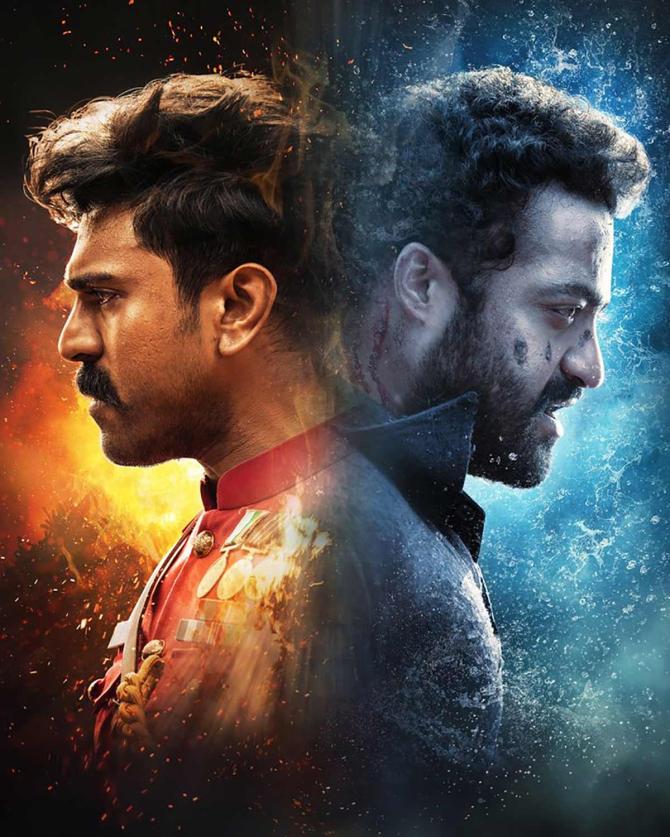
His last release, Baahubali, took India by storm.
Katappa jokes and memes were the order of the day and everyone was left wondering what Director S S Rajamouli would spin out next.
Six years after Baahubali: The Beginning and four years after Baahubali 2: The Conclusion, Rajamouli has teamed two Telugu superstars, Ram Charan and N T Rama Rao Jr, in what, once again, promises to be power-packed fare.
RRR -- which also stars Ajay Devgn, Alia Bhatt and Shriya Saran -- will release on Friday, March 25.
The film -- the title of its Telugu version expands to Roudram Ranam Rudhiram (Rage, War, Blood); in Hindi, it is called Rise Roar Revolt -- belongs to the popular genre of fictionalised history.
It looks, with creative liberty, at the lives of freedom fighters Alluri Sitarama Raju and Komaram Bheem.
Sadly, not much is known about them in today's India, which avidly awaits RRR.
Rediff.com's Syed Firdaus Ashraf spoke to Professor Bhangya Bhukya, professor of history at the University of Hyderabad, to learn about how Alluri Sitarama Raju and Komaram Bheem contributed to Indias freedom struggle.
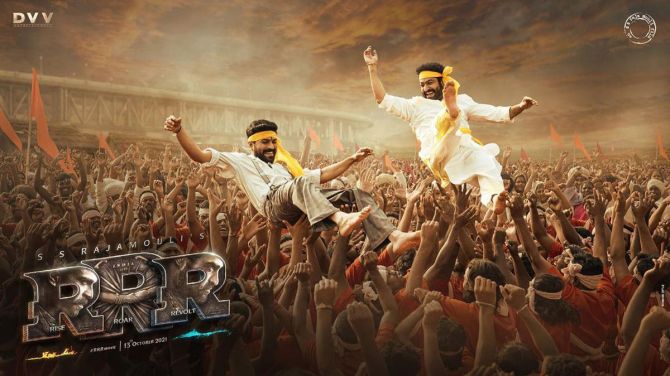
RRR looks at the lives of freedom fighters Alluri Sitarama Raju and Komaram Bheem. Why are they not as well-known as Bhagat Singh and Chandrashekhar Azad? Why have we, as a country, forgotten them?
Written history, in our country, is mainly Gangetic-centric, which is a major problem.
Deccan (history), on the whole, is missing.
You will find passing references (in Indian history) about the Deccan, but it is not until you go deep into the south again, to Tamil Nadu and to certain extent Kerala, that you will find more information.
The Deccan is consciously avoided when it comes to writing our history.
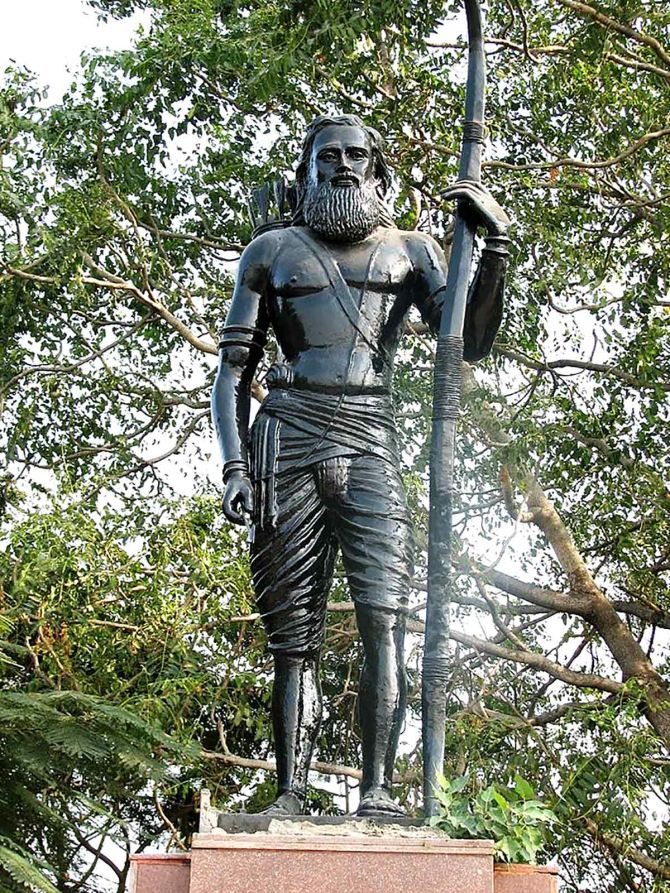
Can you tell us about Alluri Sitarama Raju's involvement in the freedom movement?
There are studies on Alluri Sitarama Raju by various sources; many of them have been done by foreigners.
Raju is an outsider who is a Kshatriya. In local terms, people from this varna (caste) are called Raju.
He is seen as a liberator of the tribals (in the Andhra region).
When subaltern (lower social class) studies were initiated, a historian called David Arnold explored the early Sitarama Raju movement.
There were 30-odd tribal movements (against the British) before Sitarama Raju entered the Andhra region. These movements have been completely ignored when the history of India's freedom movement was documented.
They were considered apolitical as there was no awareness about any freedom struggle by the Adivasis (among Indian historians). This awareness began only after Raju became a part of the Adivasi movement.
He is seen as a saviour and a champion of Adivasi causes.
There is lot of focus on Alluri Raju (now) and there many statues of him in Andhra Pradesh and Hyderabad. His story is taught in Telugu textbooks.
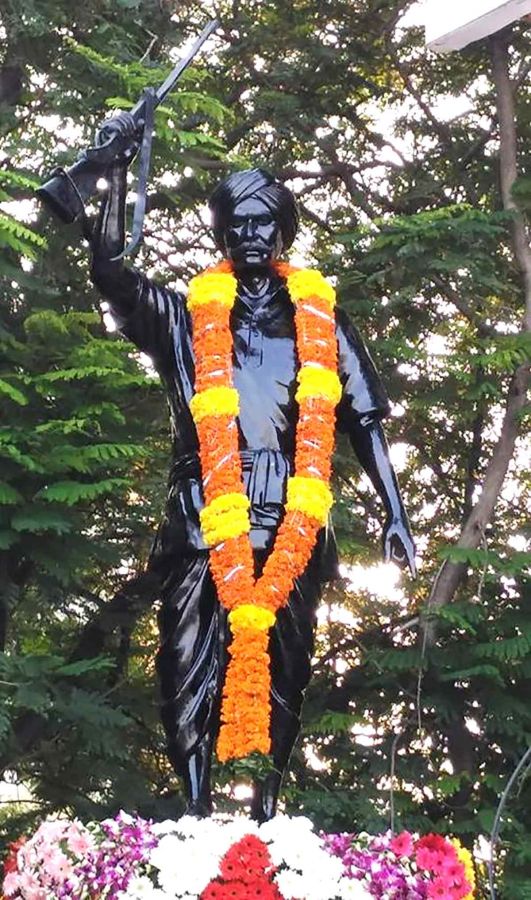
What is Komaram Bheem's contribution to the freedom movement?
As I told you, written history is driven by politics.
Upper castes consciously promoted Alluri Sitarama Raju.
Komaram Bheem, on the other hand, was a tribal; he belonged to a tribe that fought against the then Nizam for tribal autonomy.
There are documents available that show Komaram Bheem declared an independent Gond Raj, comprising 12 villages.
He organised the Adivasis against the British and the Nizam.
He was killed in an encounter in 1940.
Alluri Sitarama Raju died in the 1920s.
Can you explain the 1882 Madras Forest Act introduced by the British that restricted the movement of the tribals? It was against this Act that these two revolutionaries started their revolution, isn't it?
Before the Forest Act was introduced by the British, forests in India were never controlled by the ruling kings. They were only used for hunting and the communities who lived in the forest did so freely.
Thieves and dacoits also used to hide in the forests.
The forests were like a 'thug zone' or an 'insurgent zone' where the ruling monarch extended minimal control.
When the British introduced the Forest Act, forests became the property of the State. The British wanted to control the forests because forests had rich minerals, fertile land, wood and rice cultivation.
But their entry into the forests disrupted the Adivasi way of life.

Did the British restrict the movement of the Adivasis after the Forest Act was introduced? Was that why they revolted?
Yes, that is the precise reason.
These policies started in the state of Hyderabad in the late 19th century.
By the early 20th century, you could see lot of changes in the Adivasi areas and that is why the revolt started.
Unfortunately, the Rashtriya Swayamsevak Sangh and the Bharatiya Janata Party are trying to portray Komaram Bheem's movement as that of a Hindu champion fighting against a Muslim ruler, the nizam.
The truth is that Komaram Bheem was fighting against the forest revenue policy of the British. His revolt had nothing to do with religion.
While Marxist historians call Kerala's Moplah revolution -- also known the Malabar revolution -- a class revolt, RSS historians say it was a religious riot in which thousands of Hindus were killed. Has Komaram Bheem's revolt too been misrepresented?
Like I said, Komaram Bheem's revolt was not based on religion; it was a revolt for tribal autonomy.
Komaram Bheem declared independence for 12 tribal villages.
After his revolt, the Arya Samaj group became active in the region as did some Maratha groups.
A Telugu movie was made on this subject (which shows this history from the Sangh Parivar's perspective).
Komaram Bheem's agitation was politicised. Outsiders are giving it different perspectives to suit their own political agendas.
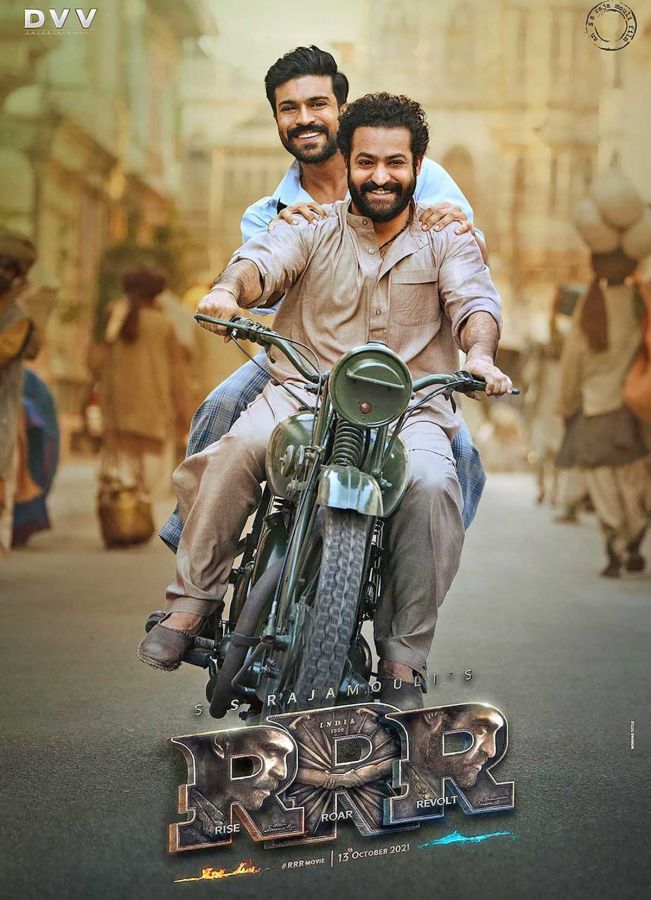
Director S S Rajamouli says he was inspired to make RRR after watching The Motorcycle Diaries, a dramatisation of Che Guevara's motorcycle road trip.
Were Komaram Bheem and Alluri Sitarama Raju the Che Guevara of their time?
He can make any claim.
The truth is while Che Guevara's struggle was class-based, this is a community-based struggle.
Both are completely different as their political philosophies are different.
I don't think he has a clear idea about what these movements were.
Rajamouli has also said that these two revolutionaries, Komaram Bheem and Alluri Sitarama Raju, were part of different decades of history and he has brought them together in a fictionalised story.
Alluri Sitarama Raju was an outsider for the tribals. He belonged to an upper caste. And these outsiders were the main exploiters of the Adivasis.
Rajus and Kammas were the main exploiters of Adivasi land. They themselves became the liberators (later), so there is lot of contradiction.
Komaram Bheem was an Adivasi and his movement called for autonomy.
Alluri Sitarama Raju's movement, on the other hand, was part of the national anti-colonial movement. He was promoting the Gandhian movement and khadi in Andhra Pradesh.
He encouraged the Adivasis to be part of the national movement.
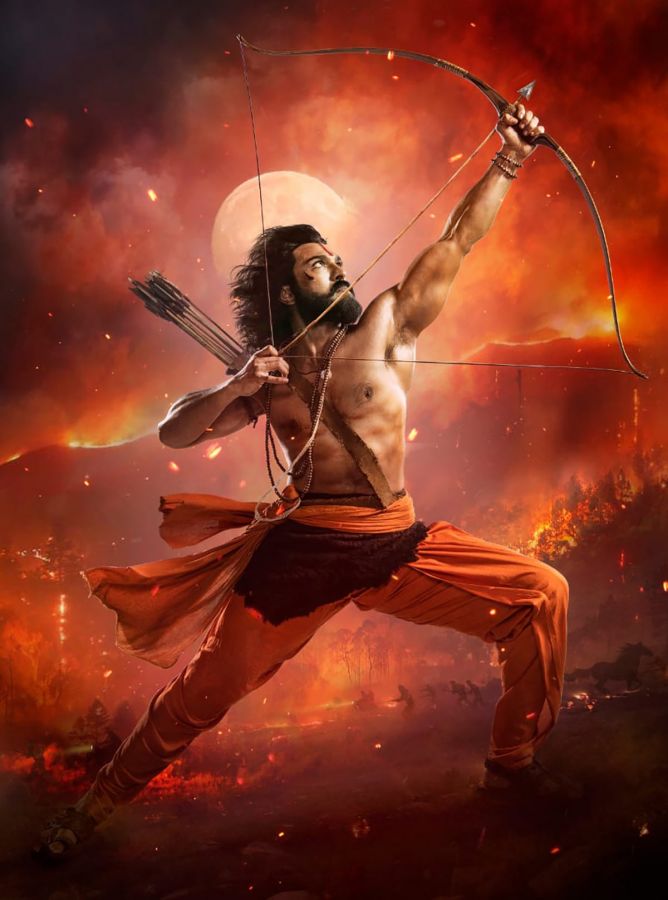
Didn't Alluri Sitarama Raju turn violent against British later?
Yes, he did. But his programmes were Gandhian in nature.
Roudram Ranam Rudhiram (Rage, War, Blood). Was this the path these freedom fighters followed? Was there an element of revenge?
There was no question of revenge. There was a revolt. They were fighting for their rights.
They lost their rights after colonial forest policies came into place so that the British could earn more revenue.
These freedom fighters were trying to reassert those rights.
If you see the Komaram Bheem movement, it asked for autonomy as they wanted re-establish their old way of life.
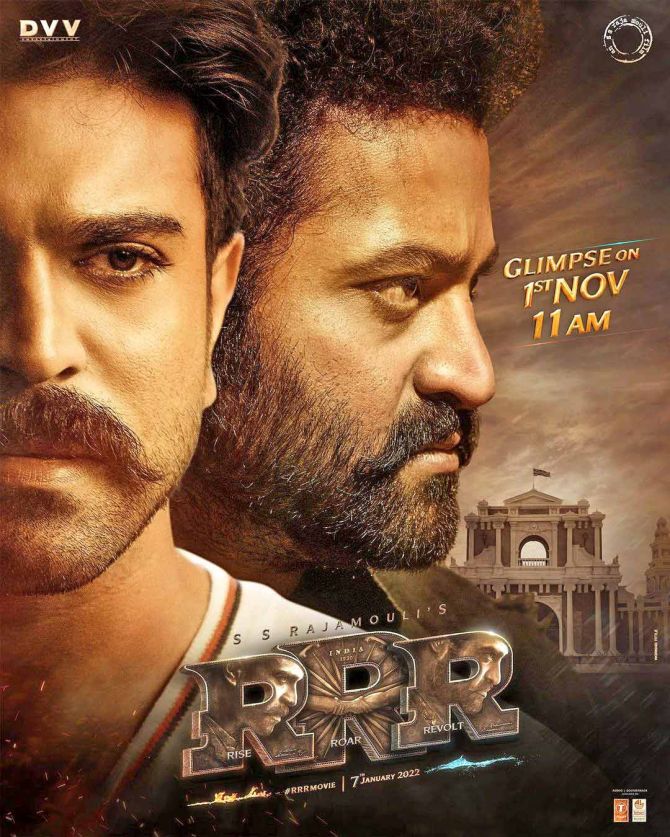
After the deaths of these two freedom fighters, did the British change anything under Forest Act?
There were changes after their deaths as forest villages were formed.
The nizam of Hyderabad brought in (Austrian ethnologist Christoph von Furer-) Haimendorf on whose advice 100,000 hectares of land was distributed back to the Adivasis.
He gave them pattas (land deeds issued by the government). They were given crop loans.
Schools were set up and curriculum was created in their language. Teachers were appointed from their community.
An anthropology department was set up at Osmania University.
Education in tribal languages continued till 1956 in the state of Hyderabad until Andhra Pradesh formed.
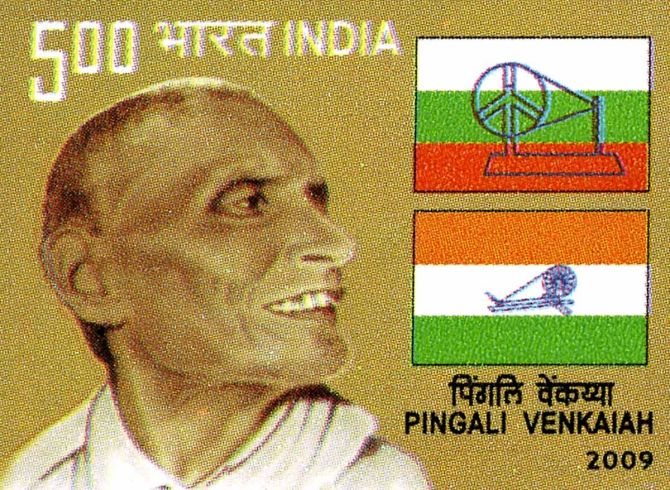
You mentioned earlier that our history has been written by people from the Gangetic plain. Is that why we have forgotten Pingali Venkayya who designed the national flag and presented it to Mahatma Gandhi in Vijayawada? He died in poverty. Till date, he has not been given the Bharat Ratna.
There is lot of politics when it comes to chronicling history.
I tell my students that writing history is all about writing politics.
Most of the historians are from the Gangetic plain.
That is why Indian history is north India-centric.
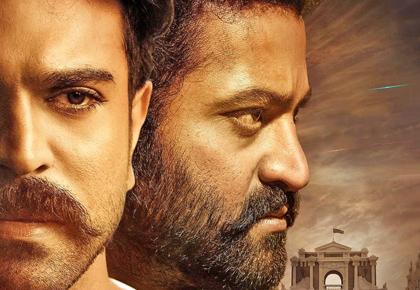











 © 2025
© 2025